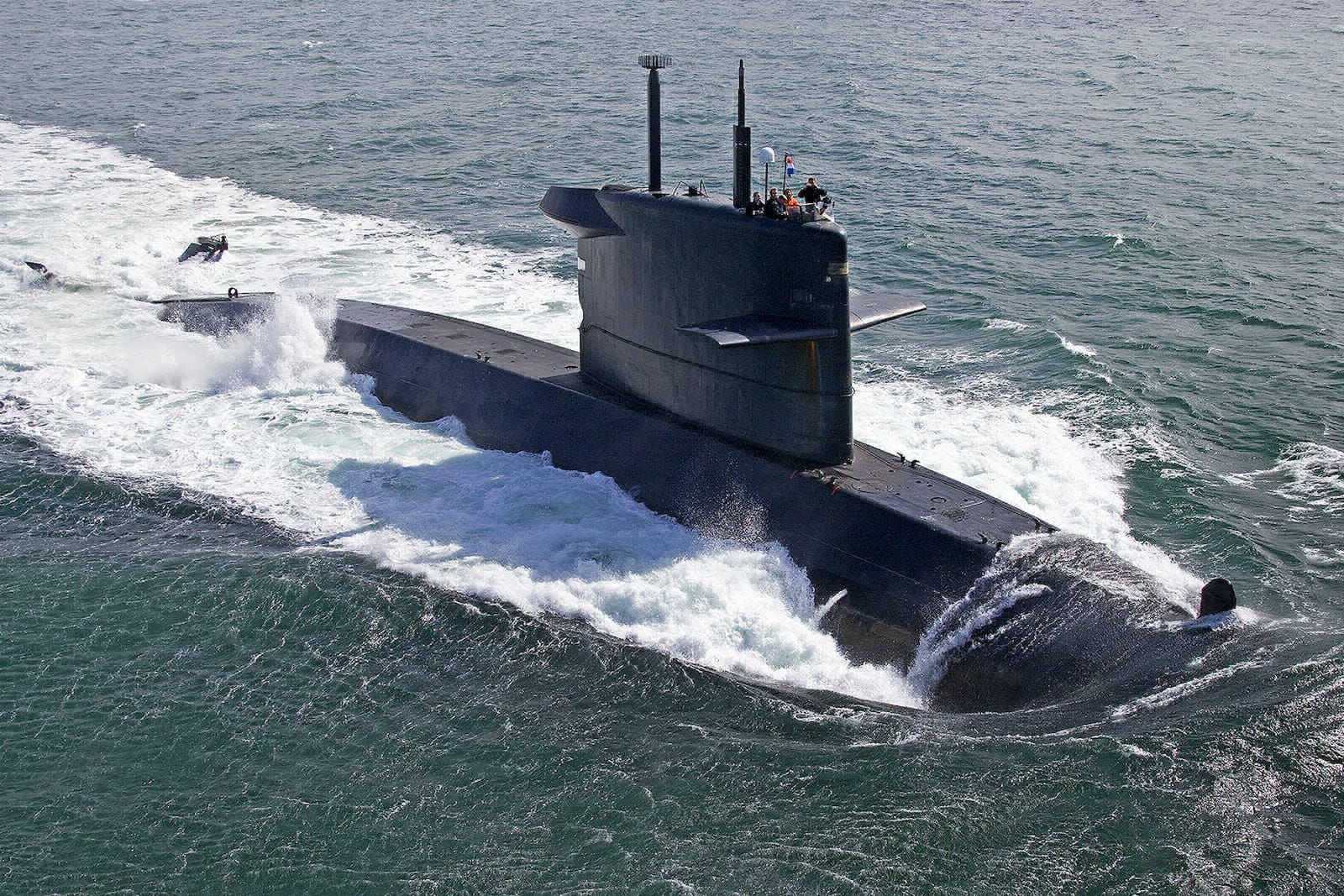

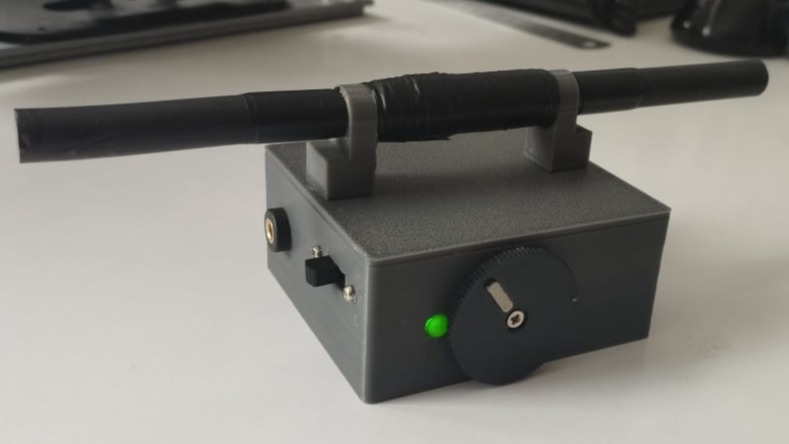
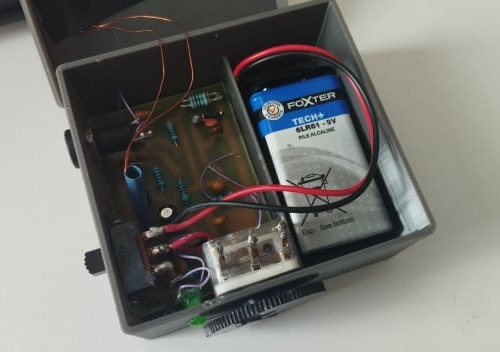
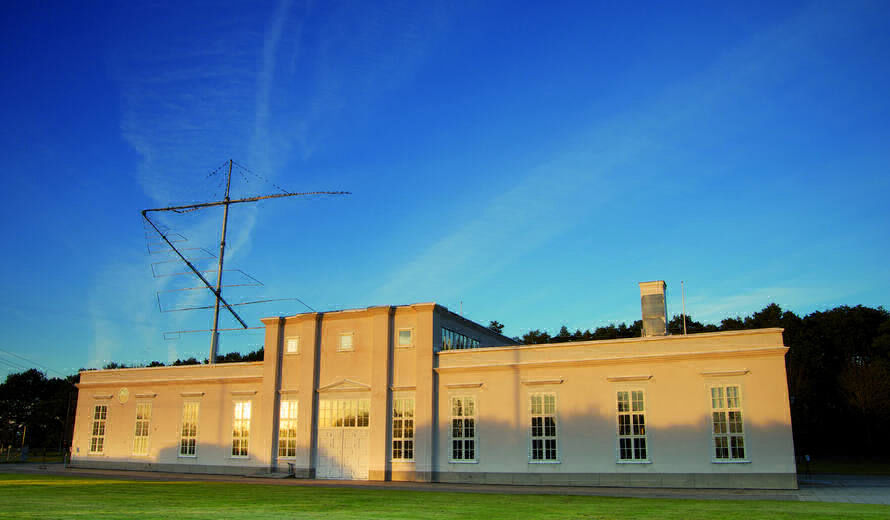
The radio station was built between 1922-1924 and used for transatlantic communication. This was done at a time that short wave comms via ionospheric layers was not yet fully understood. In the 1950s the station was used to transmit to submarines. This was done up for another 40 years. The radio station is now on the Unesco World Heritage List. You can find more information via the website links below:
Unesco or Alexander association .
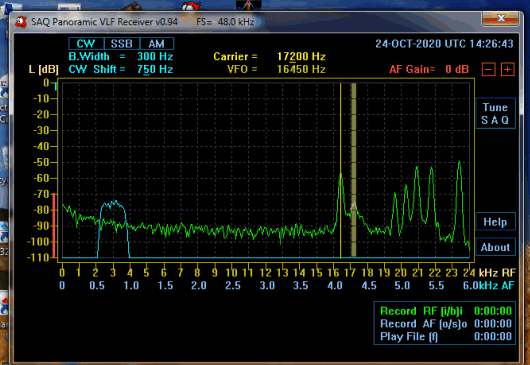
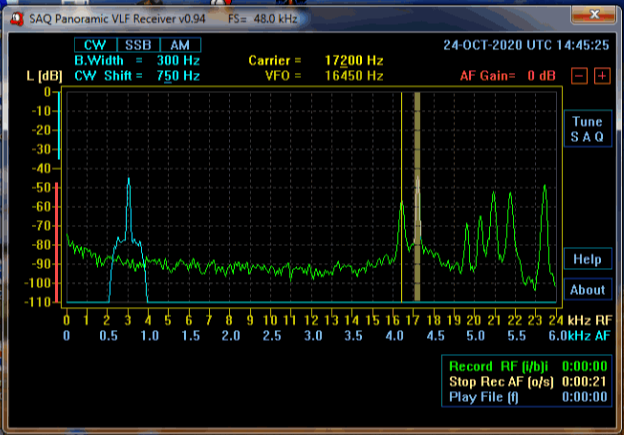
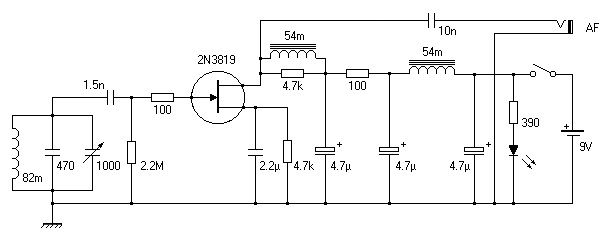
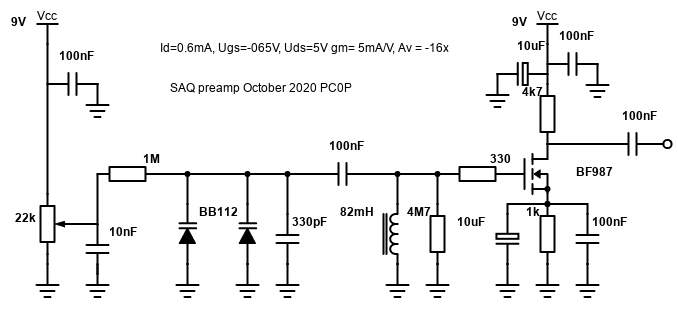
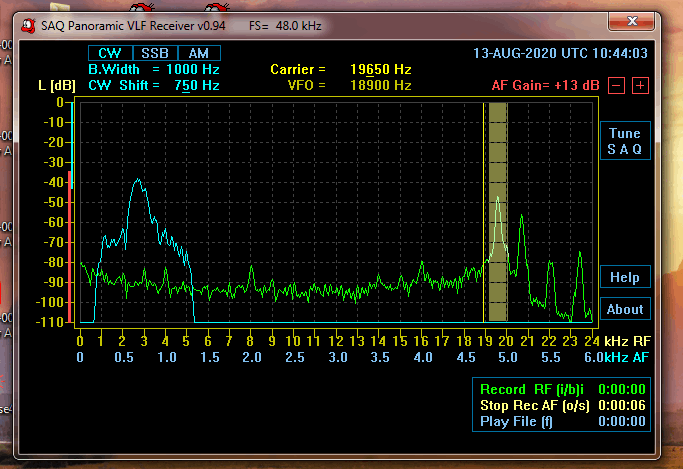
The green spectrum shows the vlf frequencies coming into the sound card. The blue spectrum at the left is the demodulated audio. Here I tuned in to a submarine transmitter in the UK on 19.65 kHz.
This is maybe the most important part of the receiver! And the nice thing of it is : you only need this! No very long wire antennas, grounding rods, huge magnetic loops. Just this rod, go a bit outside your house to avoid picking up switching power supplies. Have your laptop one meter away or so from the ferrite rod. Start the SAQ SDR programme from SM6LKM. You can listen if the frequency is clear, otherwise go to the clear.
The ferrite rod is a classical magnetic antenna used in medium wave or long wave receivers. Get the longest and most thick one you can find. I used two tiewraps to lock the coil and started winding. The wire is lacquered or enamelled copper wire of 0.25 or 0.3 mm (28 to 30 AWG). We need a lot of windings: around 900 (!) to get to a inductance of 82mH. A bit more or less is not important.
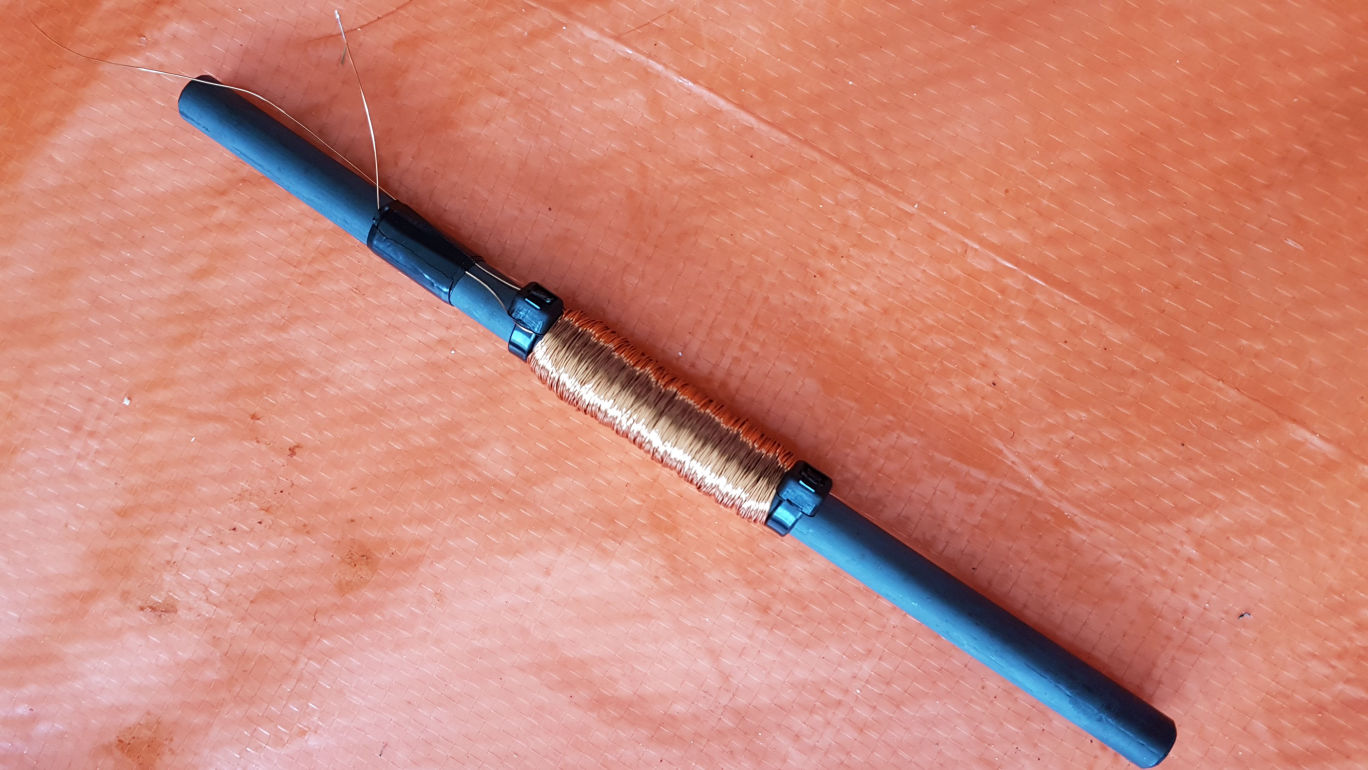
After everything was working, I tried to reverse engineer the Coil. I found out the following things:
Over here in Europe, most ferrite rods are made of only a few ferrite materials,
all from Ferroxcube Philips: 4B1 and 3B1.
Well, I did some more searching and the list is a bit larger:
4B2, 3C90, 3S3 and 3F3 ferrite material.
The permeability mu is the important parameter, the higher the mu, the less windings to make for the same induction L. I will sum up the mu value for the different ferrites:
4B1: 250, 4B2: 250, 3B1: 900, 3C90: 2300, 3S3: 350, 3F3: 2000
So we see quite a difference in mu and we want to go for a rod of 3C90 or 3F3 material, otherwise we wil go for a 3B1 rod, that's also fine.
You can also look at it from a material perspective. What material the rod is made from? I believe this gives a good indication:
I went to the website: COIL to calculate the inductance L for a mu of 250 (4B1) or 900 (3B1).
This Coil online calculator helps in managing expectations.It is January 2023 and I am updating this part:
Where to buy ferrite rods or bars:A. Contrans Ti in Poland. www.contrans.pl .They are manufacturing magnetic material and run a web shop. Go to ferroxcube, soft ferrites and impeder cores. I bought the 20cm, 12mm diameter rods from 3C85 material. This has a mu of 2000 and is first of all well documented. The grooves in the bar are no big deal, I have not noticed some influence on L or so. I made a coil of about 5cm, so 25% of the rod length. I needed 810 turns to get 82 mH. I have noticed that it makes sense to stay away from the rod ends as at the end you 'see' air with a mu of 1.... Do not make long coils with maybe 2 layers, it is more effective to make shorter coils with 5 layers.
B. I looked at the webshop box73.de. I went to the page with the ferrite rods:
Ferrite Rod at box73.de
Here you can buy a rod of 3B1 material and diameter of 8mm.
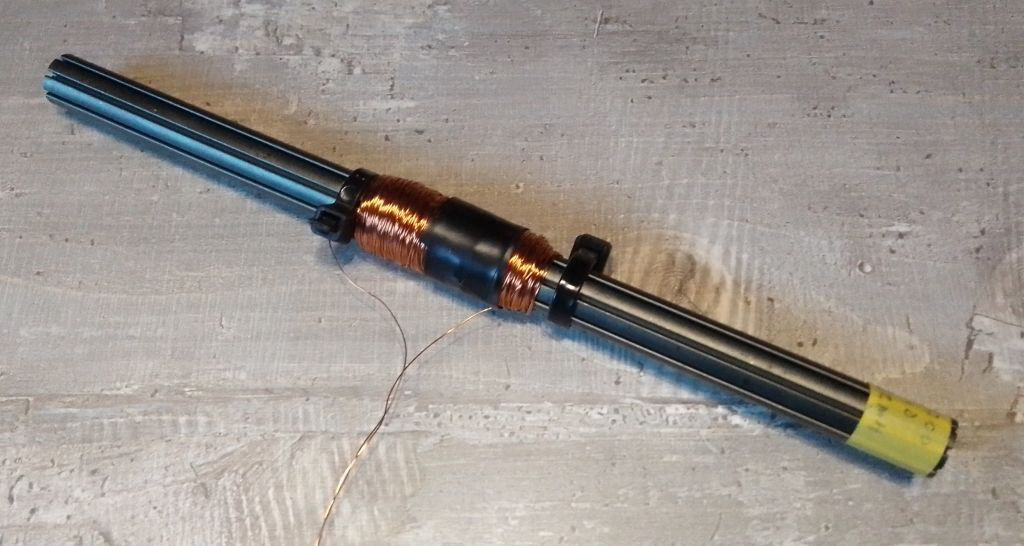
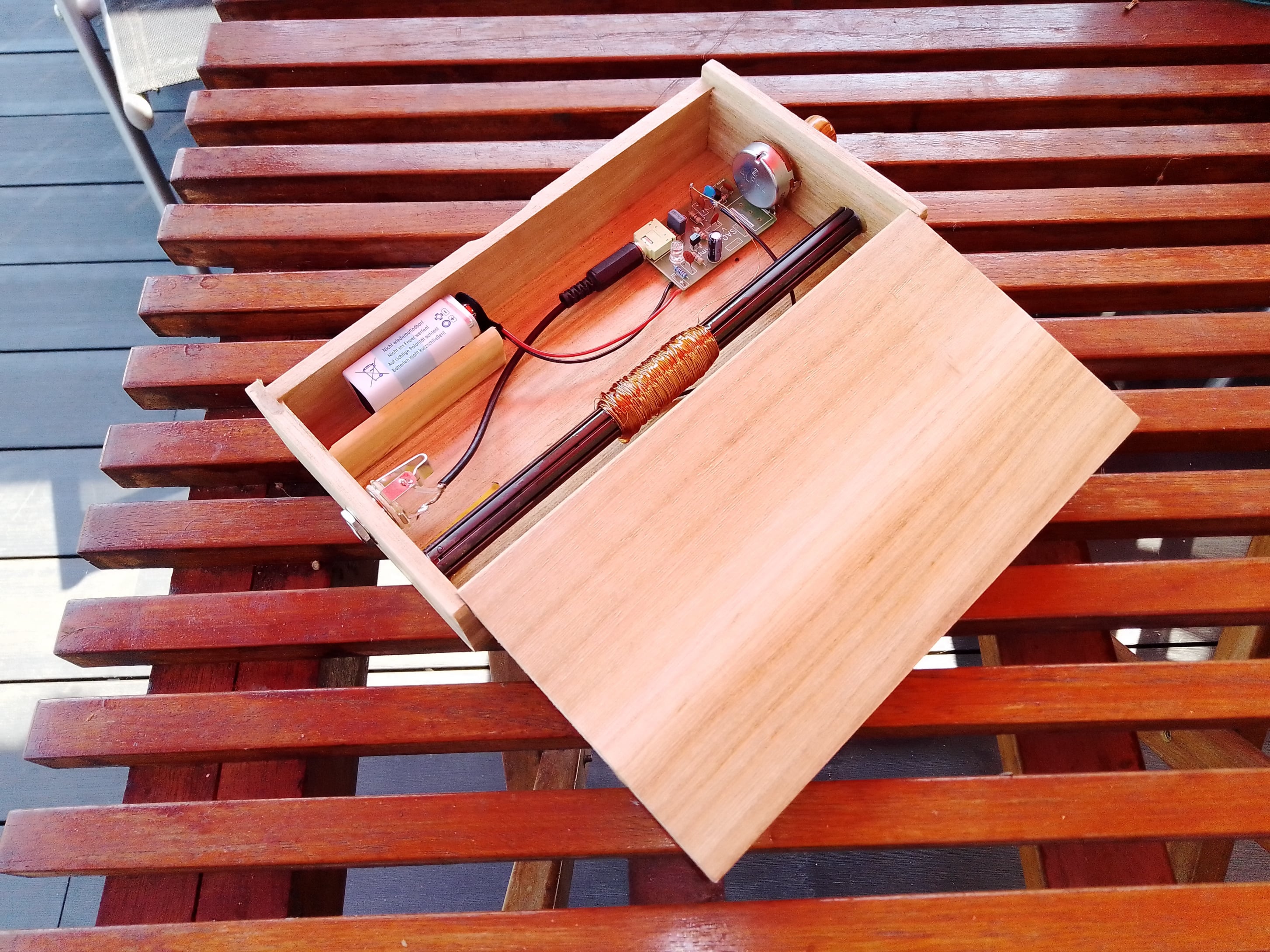

The spectrum picture I took just outside our village. It shows a couple of things:
1. there are no interfering disturbances
2. noise level is -100..-105 dB, just above the sound card level.
3. Preamp is tuned to SAQ on 17.2 kHz. The demodulated bandwidth is clear. Waiting for SAQ to transmit at Christmas time....
4. Input noise (green) at 17.2kHz is about 10dB more than preamp noise. That's fine.
5. The carriers A, B, C, D and E are:
A: SAQ at 17.2 kHz, Sweden
B. HWU at 18.3 kHz, France
C. GBZ at 19.65 kHz, UK
D. HWU at 20.8 kHz, France
E. GBZ at 22.1 kHz, UK
F. DHO38 at 23.4 kHz, Germany
Shopping List
FET 2SK241-GR, tested and preferred, 2SK161-GR Rd = 2k7 and Rs = 330 Ohm or
FET 2SK161-Y, tested. Rd = 4k7 and Rs = 470 Ohm. Works fine.
FET 2SK193-p or k. Rd = 2k2 and Rs = 47 Ohm or
FET 2SK522-d. Rd = 2k2 Ohm and Rs = 220 Ohm or
FET 2N3819, Rd=2k7, measure Ud and change Rs so that Ud = 4.5V +/-1V orFET BF410b. Rd=2k7, measure Ud and change Rs so that Ud = 4.5V +/-1V orFerrite Rod round, diameter 8-10mm, length 100-200mm, if you can choose: high mu
Potmeter 22k. Any lineair potentiometer will do. Value from 10k to 100kOhm.
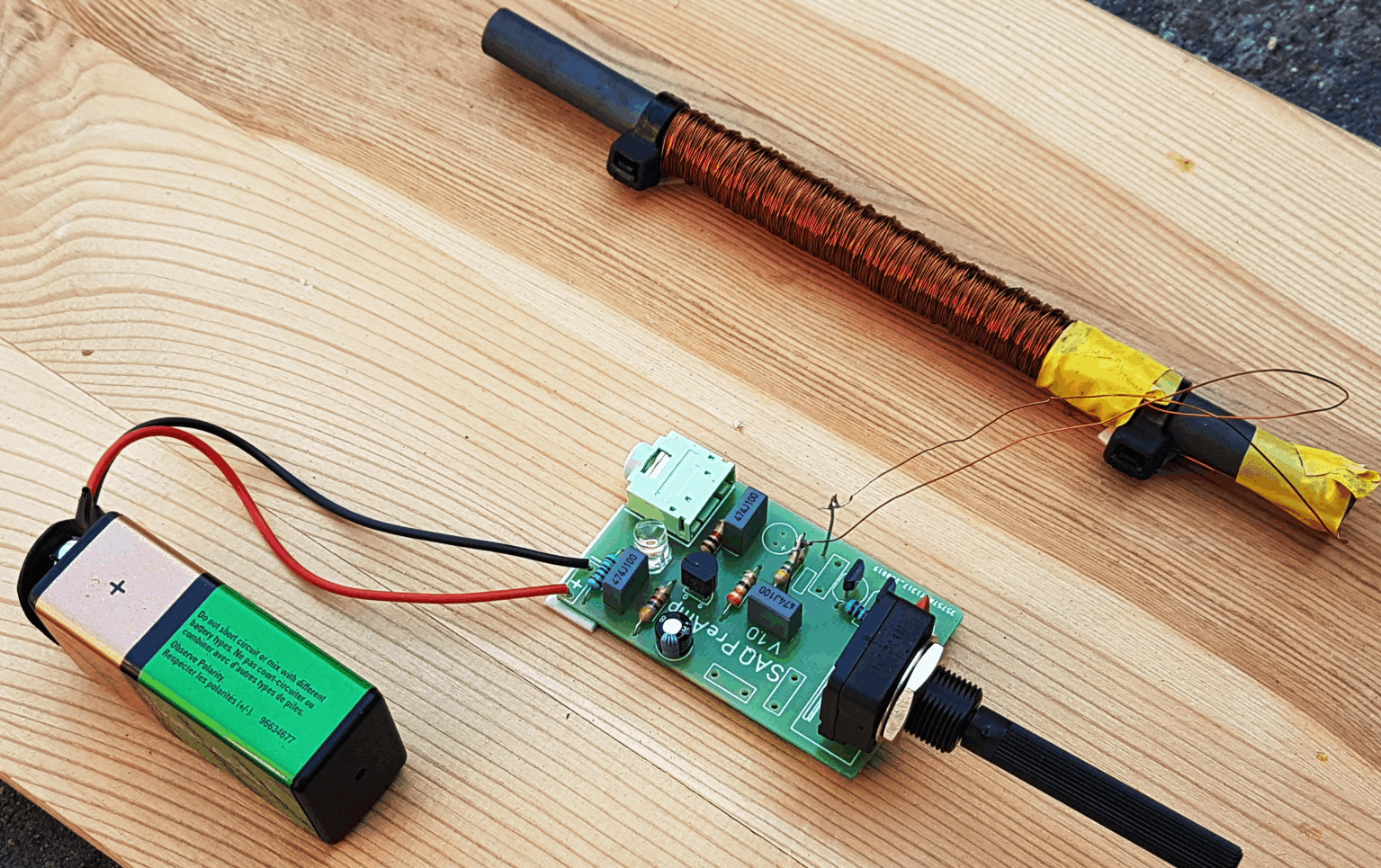
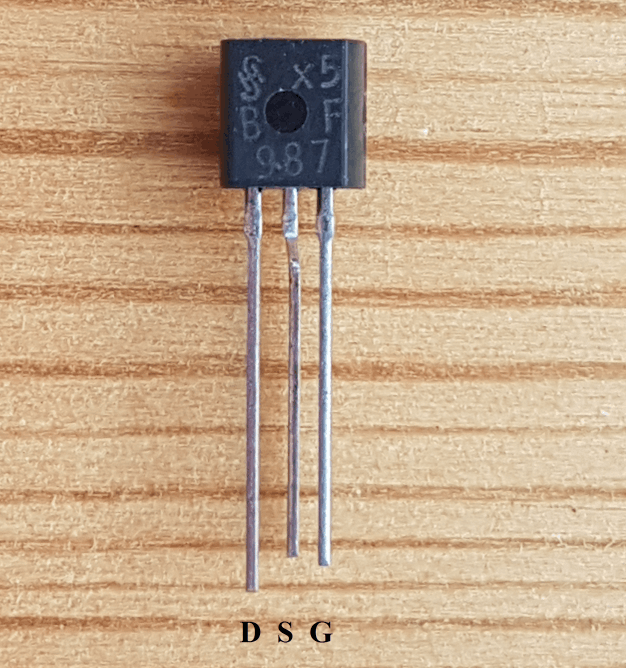
The picture above left shows a small PCB that I have created. For people that are interested, send an email to paul(at)prinz.nl . The rod I used here is the 3B1 rod I bought from box73.de . With the potentiometer I tune from around 13 kHz up to 26 kHz. This set up I am putting in a small wooden box to be prepared for the SAQ Christmas transmission. The results look promising.
At the right you see how to connect the BF987 fet as the datasheet is not very clear. I bought some more of them, if you want I can provide the fet to you.
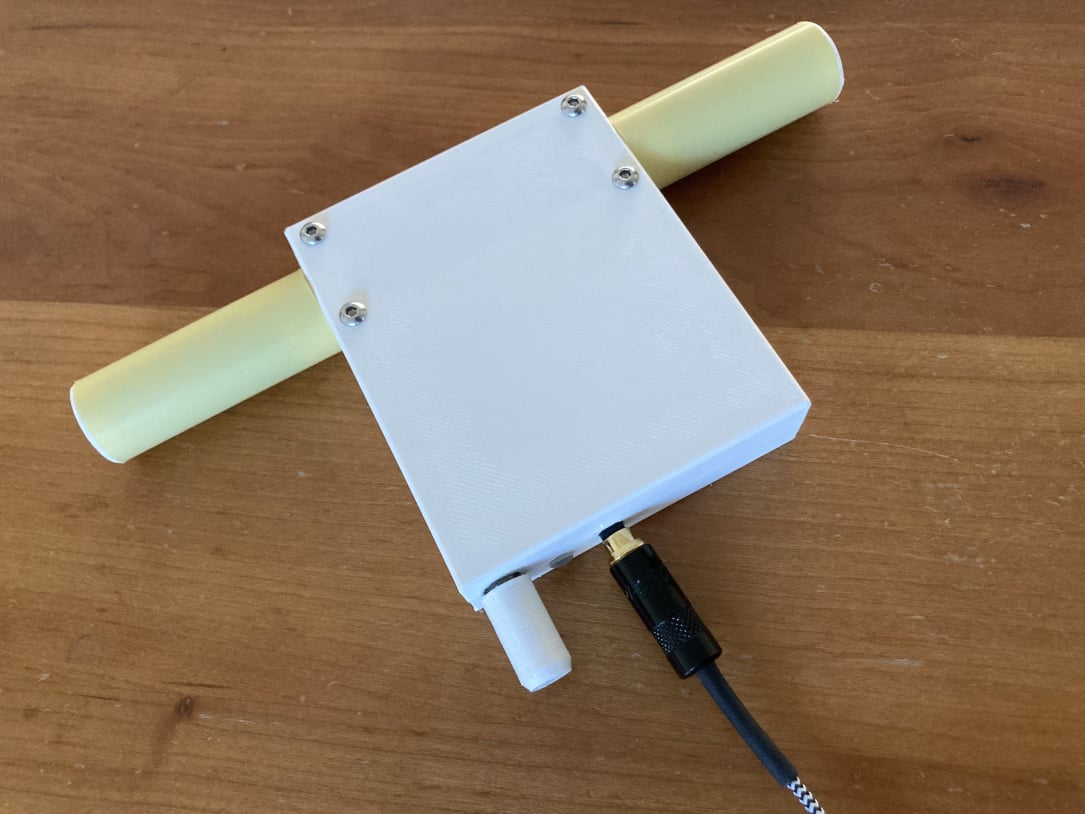
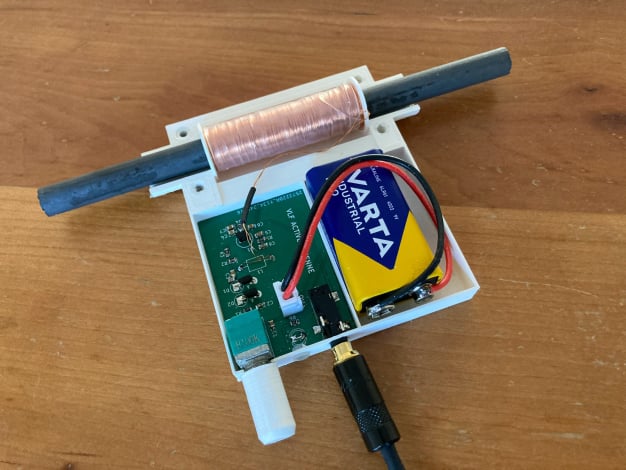
SAQ Panoramic VLF Receiver v0.94
OK. My colleagues and brothers in arms are also preparing themselves to receive the October 24 2020 transmission.
And of course some issues are popping up to be discussed over here.
The SDR Panoramic receiver from SM6LKM has it's little issues, easily to overcome. SM6LKM states that the software is designed for Windows XP. But....I have two laptops over here, one on Windows 7 and one on Windows 10. Both of them run this SDR software. When you run the software, i.e. SAQ48k, the following error occurs:
Here you can see that the bottom input is disabled and the middle input shows that the cable is not plugged in. When I plug in the cable from the preamp, it looks like this:
Sorry for the German language, but I guess that you will understand:
By accident I clicked on the CW button again and voila: the bandwidth changed! Please try this out for yourself. I like the 300Hz setting as it fits nicely to the RTTY PSK and FSK transmissions to the submarines. I will check out what filts well to the SAQ cw transmission. Yes, I can confirm that 300Hz suits the SAQ cw transmission well.
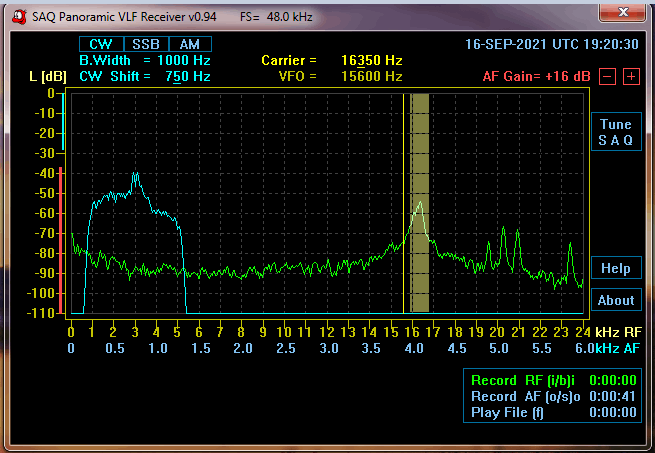
HTML Website Maker